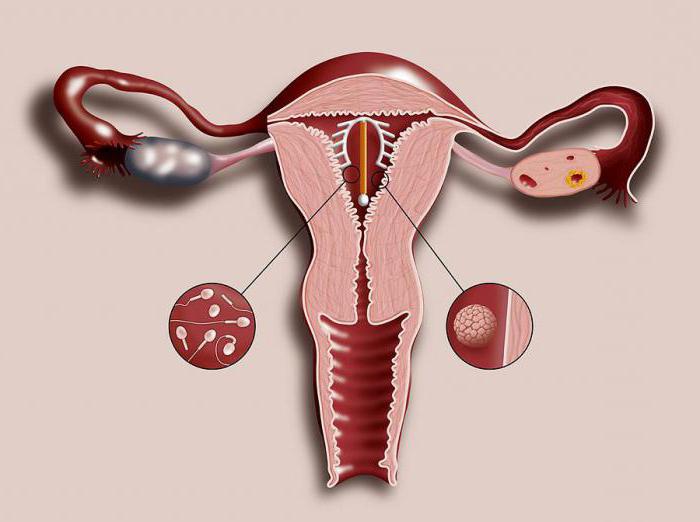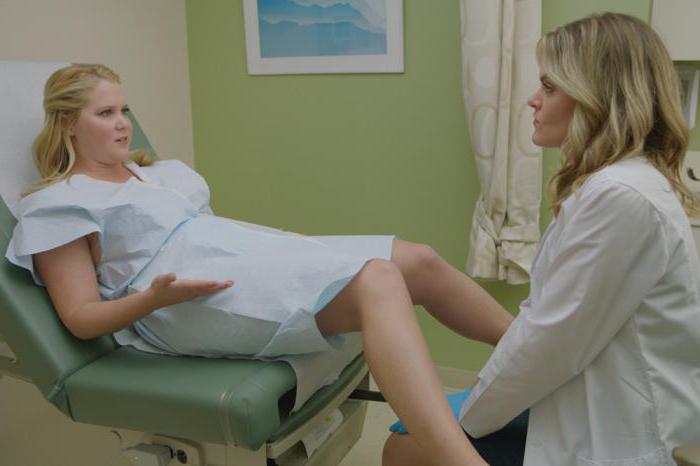Now it is not difficult to choose an effective contraceptive. A married couple has the right to choose a method on their own, taking into account all the pros and cons. It is very important to visit a doctor and consult on this issue. Indeed, the health of a woman who wants to become a mother in the future or already has children depends on this in the first place. One of the most popular methods is the intrauterine device. Next, consider the pros and cons of the intrauterine device.
How does the IUD
The purpose of the IUD is protection against unplanned pregnancy. The name "intrauterine device" indicates that it is inserted into the uterine cavity, and it was obtained due to the previous type of product, as it looked like a spiral. Currently, the Navy is a T-shaped stick made of flexible inert plastic. This material is completely safe for women's health.

There are two types of spirals:
- The upper part of the spiral is in the form of a thin copper wire.
- The spiral contains a container with hormones that enter the uterus over the entire life cycle.
It has both the first and second type of the intrauterine device, the pros and cons. The photo above demonstrates what this type of contraception currently looks like.
The principle of the spiral:
- There are changes in the endometrium that do not allow the fertilized egg to invade the uterine cavity. This can be compared with microabortion.
- The IUD increases peristalsis of the fallopian tubes, which helps to increase the speed of the egg and its movement into the uterine cavity without sperm fertilization.
- Spirals that contain copper slow down the activity of male gametes and interfere with egg implantation.

- The ovulation process is blocked due to the effect on the hypothalamic-pituitary system.
Who is recommended to the Navy
Before a doctor recommends an intrauterine device as a contraceptive, he must take into account many factors, ranging from age to general health.
Who can install the spiral:
- A woman giving birth who is over 35 years old.
- Women with children after an abortion without complications.
- Without pathologies of the cervix.
- If protected by oral contraceptives is not recommended.
- Women who have a low rate of infectious genital infections.
Contraindications to the IUD
Before using this method of contraception, it is necessary to take into account all the pros and cons of the intrauterine device.

And also make sure that there are no following contraindications:
- There was no birth yet.
- Constant change of sexual partner.
- Cancer of the pelvic organs.
- The presence of injuries and sutures on the cervix.
- Ectopic pregnancy.
- Blood diseases. Anemia.
- Infertility.
- Vaginal infections
- The presence of inflammatory processes in the reproductive system.
How to prepare for the installation of a spiral
First of all, you need to choose a suitable spiral and undergo an examination, which includes:
- Ultrasound of the pelvic organs.
- General analysis of blood and urine.
- Blood for HIV and RW, hepatitis C.
- A smear from the cervix and vagina.
- Analysis for latent genital infections.
- Colposcopy.

Next, the doctor should probe the uterine cavity, determine the distance between the uterine angles. And only after a thorough examination and the absence of contraindications, an intrauterine device is installed. The pros and cons of BMC by you should already be considered.
1-2 days before the process, it is recommended to use painkillers. Installing an intrauterine device is best during the first days of the menstrual cycle. After the procedure, rest is required for 30-40 minutes.
Features of the first days with a spiral
It is worth noting that only a doctor can install and remove the intrauterine device. The following side effects may appear for several days after installing the spiral:
- Lower abdominal pain.
- Dill discharge.
It is also worth sticking to the following recommendations. It is necessary in the first 5 days to refuse:
- Taking a bath.
- Visits to the pool, sauna, bath.
- From douching.
- From intimate life.
- Do not take acetylsalicylic acid in foods or tablets.
- Do not use tampons.

Increased physical activity should also be avoided. It is necessary to adhere to proper nutrition, rest more, lie down.
The manifestation of side effects can be observed for six months and eventually disappears altogether.
It is necessary to regularly undergo a medical examination after the IUD is installed. After installation in a month, then in 3 months, then 1 time in half a year.
What are the advantages of the Navy
If you have chosen such a contraceptive method as an intrauterine device, you need to know all the pros and cons.
Let us dwell on the positive aspects:
- It does not require special care. After installation, after a period of rehabilitation is almost not felt.
- Efficiency is 95-98%.
- Can be installed for several years.
- The menstrual cycle in many women becomes shorter, and the menstrual period itself is almost painless.
- It has a positive therapeutic effect in uterine fibroids and other gynecological pathologies.
- Can be used with breastfeeding.
- It does not affect reproductive function in the body.
- Effectiveness is maintained regardless of any medication.
- Economical and convenient. No need to adhere to the schedule of admission and spend money on the regular purchase of contraceptives.
What are the disadvantages of the Navy

There are also negative aspects of using the IUD:
- High risk of ectopic pregnancy.
- There is no protection against sexually transmitted diseases.
- The risk of inflammatory diseases is increasing.
- Do not use for nulliparous women.
- Painful menstruation for the first six months.
- Possible large blood loss.
We examined what contraceptives such as the intrauterine device, the pros and cons. The implications of BMC are discussed below.
What could be the complications of using an IUD
Of great importance is the qualification and experience of the doctor, since the correct installation or removal by an inexperienced specialist can cause the removal of the uterus. Knowing the pros and cons of the intrauterine device, you need to know what complications are possible when using it.
Possible complications when using an IUD:
- Perforation of the walls of the uterus.
- Rupture of the cervix.
- Bleeding after installation.
- The spiral can grow into the uterus.
- Antennae can irritate the walls of the cervix.
- The spiral may slip or fall out if not correctly selected and installed.
- Pain in the lower abdomen.
It is urgent to visit a specialist if:
- There were severe pains in the lower abdomen.
- There is a suspicion of pregnancy.
- Bleeding lasts a long period of time.
- There are signs of infection: fever, unusual vaginal discharge.
- During intercourse, pain or bleeding occurs.
- Navy threads have become longer or shorter.
We examined what the intrauterine device is, the pros and cons of this method of protection, as well as possible complications. Next, we consider the reviews of patients.

Reviews on the use of the IUD
Of course, before you start using a contraceptive such as an intrauterine device, the pros and cons, reviews and recommendations of a doctor must be taken into account.
So after reading the reviews of women on the use of the IUD, several conclusions can be drawn.
There are many positive reviews that the menstrual cycle is being established and often becomes much shorter. Many people improve their intimate life with a partner, since there are no special requirements for the spiral, it is easy to use, it is not felt, it does not cause discomfort.
Many emphasize the importance of making the right choice both in size so that it does not fall out and does not move, as well as in its composition. So, copper may not work or vice versa. They note the importance of the fact that the procedure for establishing or removing the spiral should be performed by a competent experienced gynecologist. Only in this case is it practically painless. They also emphasize the need for regular examinations and timely removal of the spiral to avoid complications such as ingrowth or the development of an infectious process. And before installation, a thorough examination and treatment of existing diseases is necessary. Without this, there can be big health problems, including the loss of the uterus.
Economical, affordable and effective, yet a 95% guarantee is given by the intrauterine device from pregnancy. The pros and cons of each category of patients are different.
In negative reviews, on the contrary, long periods, but painless, constant discharge, are noted. There are also many reviews about the onset of pregnancy when using the intrauterine device. It is believed that if there were genital cancers in the family, then installing a spiral is a big risk. For some, the spiral does not take root.
I want to note that all reviews emphasize that this type of contraception will be an effective means of protection only if all the pros and cons of the intrauterine device are taken into account, and all issues are discussed with a gynecologist who has sufficient experience and level of knowledge.
Prevention of unwanted pregnancy will help to avoid problems and preserve the health of women. Do not let this process go by chance in the hope that it will carry, it is better to play it safe and enjoy intimacy with your loved one.


